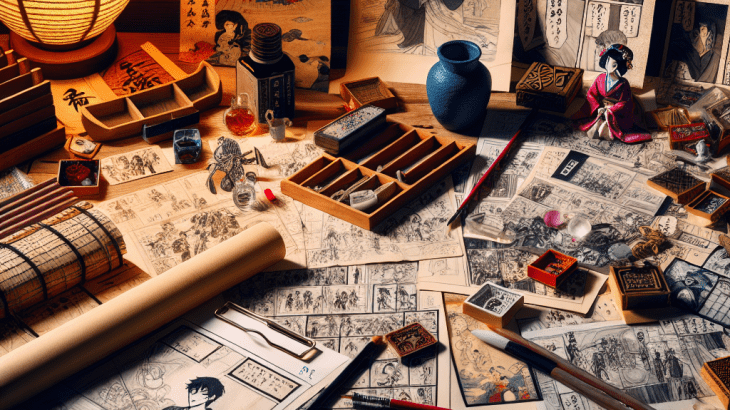The Art of Storytelling in Anime: Techniques and Traditions
Anime, a distinct form of animation originating from Japan, is not just about eye-catching visuals and epic fight scenes. At its core, the true charm of anime lies in its unparalleled storytelling. With a blend of traditional techniques and innovative approaches, anime creators have mastered the art of narrative like no other. But what exactly makes anime storytelling so unique and compelling? Let’s dive into the techniques and traditions that craft these spellbinding tales.
Techniques That Bring Stories to Life
The magic of anime storytelling stems from a range of specialized techniques that captivate the audience’s imagination. Let’s explore some of these techniques:
- Visual Symbolism: Anime often employs visual symbolism to convey complex emotions or themes. Simple objects, weather patterns, or color schemes can represent deeper meanings, enriching the narrative without the need for explicit dialogues.
- Flashbacks and Non-linear Timelines: To delve deeper into character backgrounds and plot development, anime frequently uses flashbacks and non-linear timelines. This technique keeps viewers engaged by slowly revealing critical information piece by piece.
- Character Monologues: Known for their introspective nature, many anime series include character monologues. These internal dialogues offer insights into a character’s inner thoughts and motivations, providing depth to their personas.
- Soundtracks and Music: Music in anime is more than mere background noise—it’s a storytelling tool. Carefully curated soundtracks, from sweeping orchestral scores to poignant piano sequences, enhance the emotional impact of scenes.
Traditional Layers of Anime Storytelling
While modern techniques are crucial, traditional aspects of anime storytelling remain vital in creating an immersive experience. Here are some quintessential traditions:
- Folklore and Mythology: Many anime series draw inspiration from Japanese folklore and mythology, incorporating legendary creatures, spirits, and gods. This intertwines cultural heritage with entertainment, often leading to rich, layered stories.
- Seasonal Themes: The changing of seasons is a recurring element in anime, symbolizing transitions in characters’ lives and the story’s progression. This tradition not only reflects the aesthetic beauty of Japan’s landscapes but also enhances the narrative rhythm.
- Emphasis on Relationships: At the heart of many anime stories are the relationships—whether familial, romantic, or platonic. These interactions often drive the plot forward, adding emotional weight and making the characters more relatable.
The Influence of Manga and Light Novels
Manga and light novels significantly influence anime storytelling, often serving as the source material. The transition from page to screen allows for a broader exploration of characters and plots. Furthermore, these adaptations usually stay true to their roots, maintaining the essence of the original story while utilizing the dynamic capabilities of animation.
Keeping Up with the Latest in Anime Storytelling
If you’re an anime enthusiast eager to stay updated with the latest trends and releases, exploring dedicated Telegram Channels for Anime Fans is a great move. These channels offer a wide range of content, from new series updates to in-depth discussions on storytelling techniques. Don’t miss out on the vibrant world of anime on Telegram!
Conclusion: The Timeless Appeal of Anime Storytelling
In conclusion, the art of storytelling in anime is a beautiful amalgamation of innovative techniques and time-honored traditions. This unique blend ensures that each story, whether it’s a high-octane shounen epic or a gentle slice-of-life tale, resonates deeply with its audience. So, the next time you binge-watch your favorite anime, take a moment to appreciate the intricate narrative artistry that brings these animated adventures to life.
For more insights into the anime world, remember to check out Popular Anime Channels on Telegram. Happy watching!
